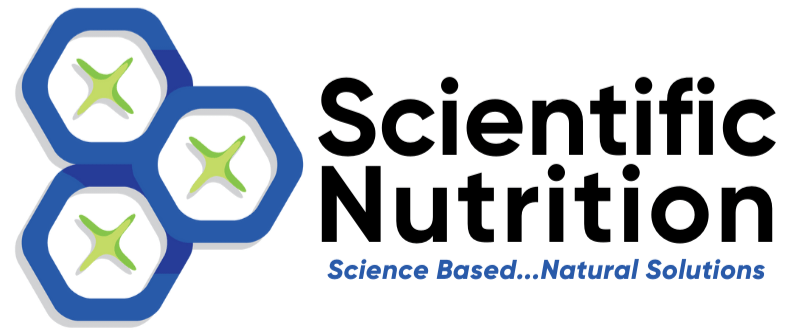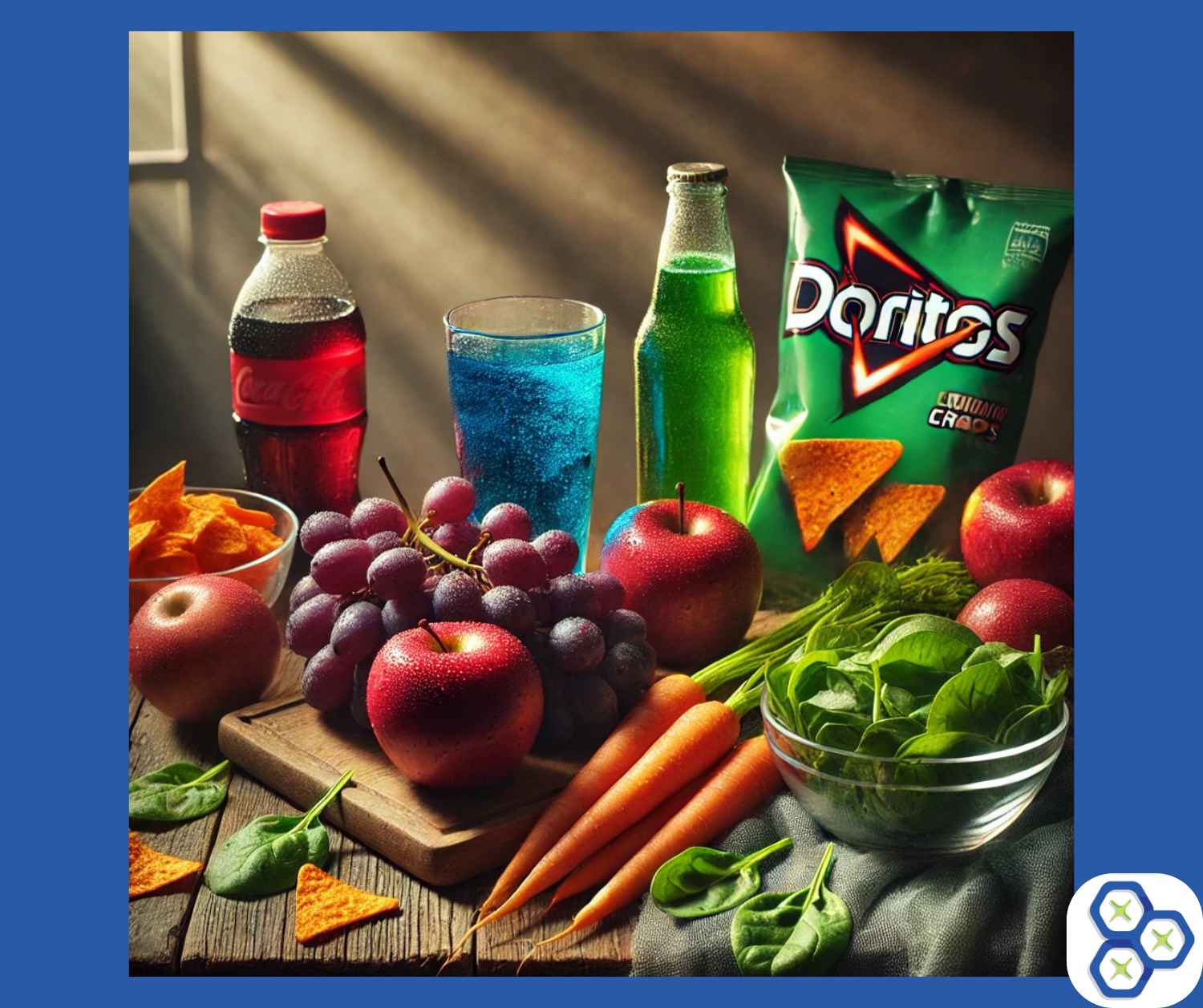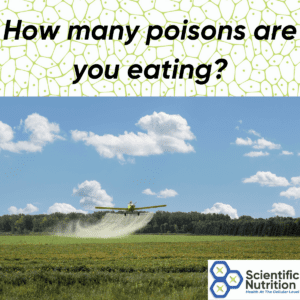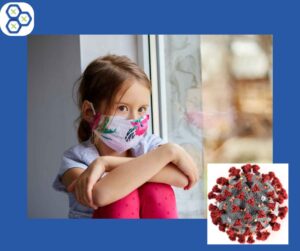Understanding the Impact of Artificial Food Dyes on Your Health
As a Certified Nutritional Consultant and Hair Trace Mineral Analysis (HTMA) expert, I’ve witnessed firsthand the devastating effects artificial food dyes can have on human health. These synthetic dyes, which serve no nutritional purpose, have been linked to numerous health concerns affecting multiple body systems. With Red 40 facing a nationwide ban in 2025, it’s crucial to understand how these common additives may be impacting your family’s health.
How Do Food Dyes Affect Your Body?
When consumed, artificial food colors can trigger a cascade of reactions within your body. These synthetic dyes may interfere with neurotransmitter activity, overload the liver’s detoxification processes, and even disrupt your digestive and immune systems. Understanding these interactions is essential for anyone looking to make healthier dietary choices.
What Are Artificial Food Colors?
Artificial food colors are synthetic compounds developed to mimic natural hues in processed foods and are found everywhere. They are the bright blues of candies to the vibrant reds of sodas. Initially introduced to enhance the appearance and marketability of food products, these additives have become common in everything from candies and sodas to baked goods.
While they may enhance the visual appeal of our favorite treats, these synthetic additives can have hidden consequences on our health. However, emerging research suggests that these dyes may contribute to adverse health effects, prompting many health experts to call for safer alternatives.
In this comprehensive blog, we’ll explore how popular dyes like Blue 1, Yellow 5, and Red 40 affect your body, reveal the top products containing these additives, and introduce you to natural, safer alternatives. If you’re ready to take control of your health and detoxify harmful additives and heavy metals, read on and consider booking a complimentary consultation with me.
The Most Harmful Artificial Food Colorings and Their Effects
Below, we break down the most popular and concerning artificial food dyes or additives. We will examine their potential negative and documented health impacts. I’ll also list the top five products most commonly containing each dye.
Red 40 (Allura Red): The Soon-to-be-Banned Culprit
Red 40 is one of the most controversial artificial dyes. Linked to inflammation and other adverse effects on the cardiovascular system, it has already been banned from cosmetics since 2009.
Important Notice: Red 40 is scheduled to become illegal for food use by 2025. Manufacturers are urged to remove this dye immediately to safeguard public health. However, waiting until then could put your health at risk.
Popular products containing Red 40:
- Kraft Macaroni & Cheese
- Doritos Nacho Cheese
- Skittles
- Gatorade (Red varieties)
- Fruit Roll-Ups
Additional items to look for would be: strawberry-flavored snacks, red velvet cake mixes, cherry-flavored beverages, red fruit punch soft drinks, and red gummies (candy and supplements).
This synthetic dye specifically affects:
Neurological System
- Triggers hyperactivity and attention problems in children known as ADD or ADHD
- Associated with anxiety and depression
- Can cause sleep disturbances and mood changes
Immune System
- Increases inflammation throughout the body
- May trigger allergic reactions
- Linked to autoimmune responses
Where Red 40 Hides in Your Kitchen
Many processed foods contain this dangerous dye, often masked behind terms like “artificial color” or “FD&C Red 40.”
Blue 1 (Brilliant Blue): The Silent Toxin
Understanding Blue 1 absorption doesn’t happen is key. The body struggles to process this synthetic compound, leading to potential bioaccumulation. It is widely used to create vibrant blue hues in a variety of foods. Some studies suggest that it may affect behavioral patterns and could be linked to hyperactivity in children but I have seen it happen first hand.
Popular products containing Blue 1:
- M&Ms
- Blue sports drinks
- Frozen treats
- Cereals
- Candy
Additional items to look for would be: blue raspberry gummy bears, blueberry-flavored sodas/energy drinks, blue sports drinks, blue ice cream, and blue cotton candy.
Blue 1 and its effects to:
Cellular Health
- “May” cause DNA damage
- Linked to oxidative stress
- Affects mitochondrial function
Kidney Function
- Can accumulate in organs
- May impair filtration
- Increases toxic load
Yellow 5 (Tartrazine): The Nervous System Disruptor
Yellow 5 is a synthetic dye often found in a range of processed foods. It has been associated with allergic reactions and potential hyperactivity, particularly in sensitive individuals.
Common products containing Yellow 5:
- Mountain Dew
- Sunkist Orange Soda
- Butterfingers
- Cheese-flavored snacks
- Packaged dessert mixes
Additional items to look for would be: citrus soft drinks, lemonade-flavored candies, yellow cake mixes, cheddar-flavored snacks, and fruit-flavored cereals.
Yellow 5 particularly impacts:
Digestive System
- Causes stomach upset and bloating
- May trigger IBS symptoms
- Affects nutrient absorption
Endocrine System
- Disrupts hormone balance such as estrogen
- May affect thyroid function
- Linked to reproductive issues
The Yellow 5 and Behavior Connection
Research shows a strong correlation between Yellow 5 consumption and behavioral issues in sensitive individuals. Hyperactivity has been linked to Blue 1, Red, 40, Yellow 5, and Yellow 6.
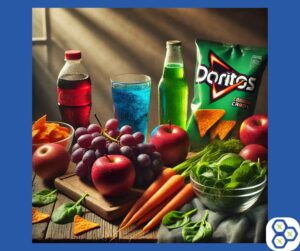
Artificial Food Dyes, Blue 1, Yellow 5, Red 40, and Other Hidden Dangers
Beyond Blue 1, Yellow 5, and Red 40, several other synthetic dyes such as Yellow 6, Blue 2, and Green 3 are commonly used. These additives are also under scrutiny for their potential to trigger allergic reactions and other health issues, making it essential to remain informed about all artificial coloring agents present in your food.
The hidden dangers of artificial food colors are a real concern for anyone committed to long-term health and well-being. The accumulation of artificial food dyes in your system can lead to chronic health issues.
Synthetic dyes such as Blue 1, Yellow 5, and Red 40 not only affect your appearance but can also disrupt vital body systems—impacting your brain, heart, liver, digestive tract, and immune function. By opting for natural alternatives and staying informed about what you consume, you can make empowered choices that protect your health.
There is also evidence on PubMed that links cancer to Yellow 5, Yellow 6, and Red 40.
Impact on Your Body: How Artificial Colors Affect Vital Organs
To truly appreciate why reducing exposure to synthetic dyes is crucial, consider how these additives affect specific body systems:
Brain and Nervous System
Artificial dyes have been shown to influence neurotransmitter activity, potentially leading to behavioral changes, mood imbalances, and even hyperactivity. This is especially concerning for children, whose developing brains are more susceptible to chemical influences.
Cardiovascular Health
Certain dyes—most notably Red 40—may promote inflammation in blood vessels, which can lead to increased oxidative stress and potentially impact heart health. Consistent exposure may contribute to long-term cardiovascular issues.
Liver Function
The liver plays a key role in detoxifying the body. When overwhelmed by synthetic additives, their efficiency can diminish, potentially leading to metabolic imbalances and impaired detoxification processes.
Digestive System
Your gut is home to a delicate balance of bacteria essential for overall health. Artificial food colors can disturb this balance, leading to digestive discomfort, inflammation, and reduced nutrient absorption.
Immune System
Chronic exposure to synthetic dyes may trigger immune system reactions, increasing the likelihood of allergies and reducing the body’s ability to fend off infections. A compromised immune system can leave you more vulnerable to chronic inflammation and other health challenges.
The Benefits of Natural Food Colorings
Natural food colorings are derived from fruits, vegetables, spices, and other organic sources. Unlike their synthetic counterparts, these natural dyes not only provide vivid colors but also offer added benefits such as antioxidants and essential nutrients. Many natural product lines now proudly use these safer alternatives, ensuring that what you eat nourishes both your body and your overall well-being. Embracing natural food colors is an empowering step toward reducing the risk of inflammation and other adverse health effects.
Nature provides beautiful, safe alternatives to artificial food dyes. Innovative companies are leading the way with natural colorants including:
- Beetroot (red)
- Turmeric (yellow)
- Spirulina (blue)
- Chlorophyll (green)
- Purple carrot (purple)
Trusted natural brands would be: Color Kitchen, Suncore Foods, Nature’s Flavors, India Tree, and Seelect Tea.
Government Regulations and Safety Standards For Food Dyes
Safety in our food supply should be a top priority for government agencies such as the U.S. Food and Drug Administration (FDA). These organizations continuously review and update standards to ensure that only safe additives are permitted in our foods. For detailed, authoritative information on food additives and safety regulations, please visit the FDA’s Food Additive Status List.
Transitioning to a Healthier Diet
Switching to products that use natural food coloring is not just about avoiding harmful additives—it’s about embracing a lifestyle that supports detoxification and overall wellness. A diet rich in naturally derived ingredients can help restore balance in your body and reduce the burden on your detoxification systems. If you’re experiencing symptoms that may be linked to a buildup of harmful additives and heavy metals, now is the perfect time to take action.
Hair Analysis and Artificial Food Dyes
As your health advocate, I invite you to a complimentary consultation to help you begin your detoxification journey. Through advanced Hair Analysis testing and personalized nutritional protocols, we can work together to eliminate these harmful substances from your body. Together, we can create a personalized plan to restore your mineral balance, boost your overall health, and help you achieve lasting well-being.
If you’re ready to detoxify your body from harmful additives and reduce symptoms linked to heavy metal exposure we can help you and your family detoxify from years of artificial food dye exposure!
Copyright Scientific Nutrition, LLC 2025
